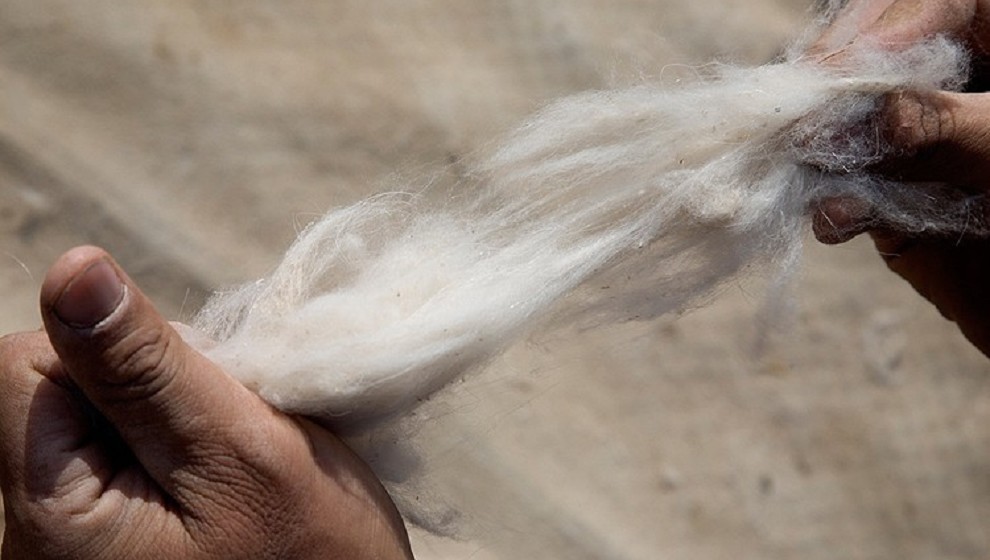What Is Cashmere and Why It’s a Key Item in Every Fashion Lover’s Wardrobe
What Is Cashmere and Why It’s a Key Item in Every Fashion Lover’s Wardrobe
Blog Article
Discovering the Different Kinds Of Cashmere an All-natural Fiber for Ultimate Luxury
Cashmere, an all-natural fiber, is usually connected with high-end and comfort. Nonetheless, not all cashmere is created equal. From the highly soft Mongolian range to the lightweight warmth of Indian Pashmina, each kind provides its very own unique features and allure. The much more budget-friendly Chinese cashmere, the conventional Scottish variation, and the high-end Italian mix, all inform a various tale of this amazing fiber. As we decipher the globe of cashmere, a deeper understanding of its true worth and elegance starts to arise.
Understanding the Extravagant Nature of Cashmere
Cashmere, frequently connected with high-end and convenience, holds an unique appeal in the globe of all-natural fibers. Unlike other natural fibers, cashmere combines insulation with breathability, providing unrivaled comfort throughout varying temperatures. Its lustrous surface and soft texture contribute to its high-end allure, validating the premium rate that usually comes with cashmere garments.
Simply What Is Cashmere and Where Does It Originate from?

Given these exceptional top qualities, one might wonder about the origin and makeup of this elegant fiber. Cashmere is derived from the soft undercoat of cashmere goats, largely discovered in Mongolia, China, Iran, and Afghanistan - is cashmere a natural fiber. These goats are adjusted to extreme climatic problems, creating an exceptionally fine, soft underfur as a defense against the bitter cold. This underfur, or undercoat, is what is gathered for cashmere. Each springtime, when the goats normally shed their wintertime coat, farmers comb out the fine underhair, leaving the coarser hair behind. This careful process adds to the shortage and high cost of cashmere. With its origin in the rough landscapes of Asia, cashmere is a testament to nature's capability to produce luxury from adversity.
Translating the Different Sorts Of Cashmere
Understanding the different sorts of cashmere is key to valuing the high quality and distinct features of this lavish material. Normally, cashmere is categorized right into three types: raw, virgin, and reused. Raw cashmere is straight obtained from the goat and is unprocessed. This kind frequently contains contaminations such as dirt and coarse hair. Virgin cashmere, on the various other hand, is the pure, unrecycled material that is rotated into yarn for the first time. It is the softest and most glamorous. Recycled cashmere is made from virgin product that has been previously used. It is re-spun and used in creating lower-cost cashmere products. Decoding these types is the primary step in comprehending the exclusivity and worth of cashmere.

The Unique Features of Each Type of Cashmere
Having explored the various groups of cashmere, it comes to be noticeable that each kind flaunts its special set of qualities. Mongolian cashmere, for instance, is renowned for its exceptional high quality, due to Mongolia's extreme winters that create longer and finer fibers. Alternatively, Chinese cashmere is often a lot more budget-friendly, though its much shorter fibers can minimize longevity.
Why Cashmere Is the Epitome of Luxury in vogue
Cashmere holds a prestigious position in the globe of style, related to as a sign of high-end and sophistication (is cashmere a natural fiber). Cashmere is acquired from the fine undercoat of Himalayan goats, understood for their exceptional high quality fiber. Cashmere's exceptional convenience and sturdiness make it a popular product in the production of premium garments.
The Refine of Making Cashmere: From Goat to Garment
The journey of cashmere, from being an undercoat of a Himalayan goat to a glamorous garment, is a detailed one. With the here advent of springtime, farmers in Mongolia and China collect the woollen by brushing the goats, making sure no damage is done. The gotten woollen consists of crude outer hair and soft downy undercoat. This blend is after that meticulously separated, with just the soft down utilized for cashmere. This raw cashmere is cleaned, colored and spun right into yarn. The thread is after that woven or knitted into materials. The final step includes cleaning and pushing to provide the fabric its characteristic soft check over here qualities and warmth. From goat to garment, each action is a testament to the perseverance, skill and artistry involved in crafting cashmere.

Final Thought
In verdict, cashmere, with its all-natural elegance and unparalleled convenience, reigns supreme on the planet of luxury style. The diversity in kinds, varying from the soft Mongolian, lightweight Indian Pashmina, budget-friendly Chinese, typical Scottish, to the colorful Italian, exposes the convenience of this natural fiber. The scrupulous process of changing it from a goat to a garment additionally contributes to its exclusivity, making cashmere the embodiment of sophistication and luxury.
Cashmere, a natural fiber, is typically associated with high-end and convenience (is cashmere a natural fiber).Cashmere, typically linked with deluxe and convenience, holds a distinct appeal in the world of natural fibers. Unlike other all-natural fibers, cashmere combines insulation with breathability, supplying Visit This Link unequaled convenience across differing temperatures. Cashmere is acquired from the soft undercoat of cashmere goats, mainly located in Mongolia, China, Iran, and Afghanistan. Cashmere is acquired from the fine undercoat of Himalayan goats, recognized for their premium top quality fiber
Report this page